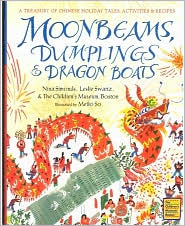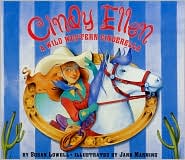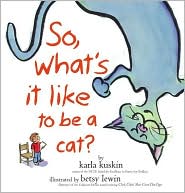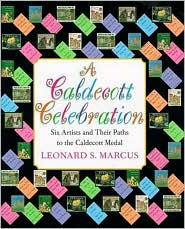 BIBLIOGRAPHY
BIBLIOGRAPHYSimonds, Nina, Leslie Swartz and The Children’s Museum, Boston. 2002. MOONBEAMS, DUMPLINGS & DRAGON BOATS: A TREASURE OF CHINESE HOLIDAY TALES, ACTIVITIES & RECIPES. Ill. by Meilo So. NY: Gulliver Books/Harcourt Inc. ISBN 0152019839.
PLOT SUMMARY
To support, build, and educate family traditions of the Chinese culture Moonbeams, Dumplings & Dragon Boats: A Treasury of Chinese Holiday Tales, Activities & Recipes presents four Chinese festivals: the Chinese New Year and the Lantern Festival, Qing Ming and the Cold Foods Festival, The Dragon Boat Festival, and the Mid-Autumn Moon Festival. There are individual meanings and stories, crafts and activities, and cooking recipes that are related to each festival and are fun for all ages.
CRITICAL ANALYSIS
The collaborations of Nina Simonds, Leslie Swartz and Boston’s Children’s Museum have brought the world a fun and educational book to learn about the traditional festivals of the Chinese culture and how some people celebrate them, as noted in the Author’s notes. Another explanation made before delving into the festivals, the book introduces the Chinese lunar calendar, which is vital to determining when each festival begins.
The text is wonderfully detailed and simple to read as it describes the special meanings of each festival, for example the Quin Ming Festival is to honor and celebrate the dead (Simonds, et al, p. 34) provides stories that are related to the celebrations. For example, for the Dragon Boat Festival, there is the wonderfully descriptive tale is the one of the poet and statesman Qu Yuan, who had been banished to the country attempts for fairness in his state and had thrown himself into the river upon hearing his beloved state was being taken over by an enemy troops. From years later as a fisherman made his offer to the river dragon Qu Yuan appears asking to be fed because the swift river dragon does not share the rice offerings. So every year people row their Dragon Boats on the river to honor and celebrate the poet-patriot (Simonds, et al, p. 52).
The crafts and recipes for all festivals are absolutely fun and delicious. There are instructions to make kites and pins wills to celebrate the Quin Ming and the Cold Foods Festival. There are recipes for New Year Dumplings and Fresh Spring Rolls. Along with the crafts there are other activities for all to enjoy such as learning Lantern Riddles which are recited by many during the Lantern Festival.
Meilo So’s watercolor illustrations are full of details, bold in color and full of whimsy. At times the art is quite exact in its design; however, for the majority of the book it is freestyle. There are certain moments that they even resemble the beautiful classic watercolor art of the traditional Chinese culture.
The format Moonbeams, Dumplings & Dragon Boats: A Treasury of Chinese Holiday Tales, Activities & Recipes is of good size. The pages are primarily dedicated to the text; however, on every page there is at least one of So's artistic illustrations. However, for every introduction page to the each festival there is a double-page spread of brilliantly colored illustrations of that festival. The immense amount of details in the stories and fun activities (both crafts and the recipes) allows both children and adults to get involved in learning about the Chinese culture and building family traditions.
BOOK REVIEWS
BOOKLIST
Gr. 4-6. This brightly illustrated, large-format book introduces Chinese New Year and the Lantern Festival, Qing Ming and the Cold Foods Festival, the Dragon Boat Festival, and the Mid-Autumn Moon Festival. Each section explains the holiday, tells stories related to it, and offers at least one activity and one recipe. Attractively designed, the pages include plenty of white space, creating a fine background for So's brilliantly colored, stylized paintings. The recipes, some of which require the use of food processors and hot woks, are often beyond the culinary skills of the average child, though interested adults can use them to broaden their children's experience of Chinese culture. The activities--riddles to tell and paper lanterns to make, among them--look like fun for young people. Lists of books and Web sites and a pronunciation guide round out the treatment. Carolyn Phelan Copyright © American Library Association. All rights reserved
PUBLISHERS WEEKLY
In Moonbeams, Dumplings & Dragon Boats: A Treasury of Chinese Holiday Tales, Activities & Recipes by Nina Simonds, Leslie Swartz and the Children's Museum, Boston, illus. by Meilo So, each of a quartet of holidays includes a brief background and introduces a bevy of crafts, recipes and legends. "The Story of the Kitchen God" kicks off the section on the Chinese New Year (and the reason behind serving the traditional tanggua, or candied melons); a recipe for Five-Treasure Moon Cakes stuffed with apricot preserves, pitted dates, sweet coconut and raisins helps youngsters celebrate the Mid-Autumn Moon Festival. Step-by-step illustrations aid in food preparation or crafts such as New Year Prints or Good Luck Characters in this elegantly designed volume. Copyright 2002 Reed Business Information, Inc.
CONNECTIONS
*Learn more about a specific Chinese festival with books like Lanterns and Firecrackers: A Chinese New Year Story by Johnny Zucker and Jan Barger Cohen.
*Read more stories from the Chinese culture like The Dragon Emperor: A Chinese Folktale by Tricia Morrissey and Cat and Rate: The Legend of the Chinese Zodiac by Ed Young.
*Ask the children if the have their own family traditions and if they were based on a specific culture.




